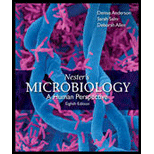
Concept explainers
Compare the impact on a society of an endemic debilitating disease with high incidence to the impact on society of a similar disease with high prevalence.
To review:
The comparison between the impact on a society with an endemic debilitating disease with high incidence and the impact on society with a similar disease with high prevalence.
Introduction:
An endemic disease refers to a disease which is persistently present in a population. For example- In the UnitedStates,the common cold is an endemic disease. An endemic debilitating disease is a disease which is constant in a population and weakens the people suffering from it.
Explanation of Solution
Both endemic debilitating disease with high incidence and disease with high prevalence have a negative impact on the society. The comparison between the two is given as under-
| Endemic debilitating disease with high incidence | Endemic debilitating disease with high prevalence |
| 1) This results in the development of new cases that means the given population is at a risk of acquiring the disease. Thus, the society is at a constant threat as new cases may emerge. | 1) This does not result in the development of new case as a given disease already exists in society and is prevalent that means the society is already suffering from this disease at a specific time. |
| 2) The emerging cases could be treated actively by developing vaccines and antibiotics. It can also be controlled by discovering the potential risk factors. Chances of recovery are there. | 2) If a society is having a prevalent disease it means that this is adversely affecting the overall health of the society. |
| 3) The status of a person may change from ill to healthy. So, one needs to be careful while taking the new emerging cases into account. | 3) Both old and new cases present in society is taken into account. |
| 4) The diseased person is often recovered. | 4) This results in recovery, migration or death. |
Thus, it can be concluded that both endemic debilitating diseases with high incidence and prevalence severely affects the society. As seen in the increasing incidence of newly emerging diseases, it can be controlled by tracing the source of infection but as prevalent diseases are already present in society it may lead to death, recovery or migration.
Want to see more full solutions like this?
Chapter 19 Solutions
Nester's Microbiology: A Human Perspective
- ✓ Details Draw a protein that is embedded in a membrane (a transmembrane protein), label the lipid bilayer and the protein. Identify the areas of the lipid bilayer that are hydrophobic and hydrophilic. Draw a membrane with two transporters: a proton pump transporter that uses ATP to generate a proton gradient, and a second transporter that moves glucose by secondary active transport (cartoon-like is ok). It will be important to show protons moving in the correct direction, and that the transporter that is powered by secondary active transport is logically related to the proton pump.arrow_forwarddrawing chemical structure of ATP. please draw in and label whats asked. Thank you.arrow_forwardOutline the negative feedback loop that allows us to maintain a healthy water concentration in our blood. You may use diagram if you wisharrow_forward
- Give examples of fat soluble and non-fat soluble hormonesarrow_forwardJust click view full document and register so you can see the whole document. how do i access this. following from the previous question; https://www.bartleby.com/questions-and-answers/hi-hi-with-this-unit-assessment-psy4406-tp4-report-assessment-material-case-stydu-ms-alecia-moore.-o/5e09906a-5101-4297-a8f7-49449b0bb5a7. on Google this image comes up and i have signed/ payed for the service and unable to access the full document. are you able to copy and past to this response. please see the screenshot from google page. unfortunality its not allowing me attch the image can you please show me the mathmetic calculation/ workout for the reult sectionarrow_forwardIn tabular form, differentiate between reversible and irreversible cell injury.arrow_forward
- 1.)What cross will result in half homozygous dominant offspring and half heterozygous offspring? 2.) What cross will result in all heterozygous offspring?arrow_forward1.Steroids like testosterone and estrogen are nonpolar and large (~18 carbons). Steroids diffuse through membranes without transporters. Compare and contrast the remaining substances and circle the three substances that can diffuse through a membrane the fastest, without a transporter. Put a square around the other substance that can also diffuse through a membrane (1000x slower but also without a transporter). Molecule Steroid H+ CO₂ Glucose (C6H12O6) H₂O Na+ N₂ Size (Small/Big) Big Nonpolar/Polar/ Nonpolar lonizedarrow_forwardwhat are the answer from the bookarrow_forward
 Medical Terminology for Health Professions, Spira...Health & NutritionISBN:9781305634350Author:Ann Ehrlich, Carol L. Schroeder, Laura Ehrlich, Katrina A. SchroederPublisher:Cengage LearningHealth Safety And Nutrition F/Young ChildHealth & NutritionISBN:9781305144767Author:MAROTZPublisher:CengageCase Studies In Health Information ManagementBiologyISBN:9781337676908Author:SCHNERINGPublisher:Cengage
Medical Terminology for Health Professions, Spira...Health & NutritionISBN:9781305634350Author:Ann Ehrlich, Carol L. Schroeder, Laura Ehrlich, Katrina A. SchroederPublisher:Cengage LearningHealth Safety And Nutrition F/Young ChildHealth & NutritionISBN:9781305144767Author:MAROTZPublisher:CengageCase Studies In Health Information ManagementBiologyISBN:9781337676908Author:SCHNERINGPublisher:Cengage Comprehensive Medical Assisting: Administrative a...NursingISBN:9781305964792Author:Wilburta Q. Lindh, Carol D. Tamparo, Barbara M. Dahl, Julie Morris, Cindy CorreaPublisher:Cengage Learning
Comprehensive Medical Assisting: Administrative a...NursingISBN:9781305964792Author:Wilburta Q. Lindh, Carol D. Tamparo, Barbara M. Dahl, Julie Morris, Cindy CorreaPublisher:Cengage Learning





